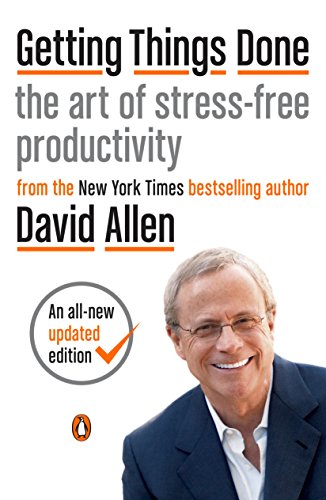

This article is an excerpt from the Shortform summary of "Getting Things Done" by David Allen. Shortform has the world's best summaries of books you should be reading.
Like this article? Sign up for a free trial here .
What is a GTD Next Actions list? How can these lists help you stay organized?
In the GTD system, a Next Actions list is a type of skill that helps you determine how and when to complete a task. There are a few options for your Next Actions list, and ways you can help yourself manage your time.
Your Next Actions List
The GTD Next Actions list is essentially the catch-all for tasks that are actionable, take longer than two minutes, and can’t be delegated. Reference your Next Actions list whenever you have free time to tackle a task.
If you have more than a few dozen next actions on this list, it helps to divide them up into categories based on what you need or where you need to be to tackle them. For example, make a list of the calls you need to make, and another list for tasks that require you to use a computer.
Option 1: Put It on Your Projects List
The first option for your GTD Next Actions list is your project list. As we talked about, the GTD program defines projects as anything that takes more than one action to complete and that can be finished within a year. Since your next actions need to be specific steps, this broad definition creates a place—your Project list—to track all ongoing tasks.
Tracking your projects helps you:
- Keep progress moving forward
- Keep the projects off your mind
Make a note on each item that belongs on your Projects list, and put them in a Pending pile. You’ll sort this pile into the appropriate lists and folders in the next step.
Option 2: Do It
If the next action on your GTD Next Actions list takes fewer than two minutes to complete, do it now. Even if it’s not a high priority, two minutes is roughly the efficiency cutoff: It’s more efficient to get a two-minute task out of the way now than to spend the time storing and tracking the item to do later.
This rule is especially effective for getting through a backlog of emails, most of which typically take less than two minutes to read and fire back a quick response.
If you have a little more time, make the cutoff five or 10 minutes instead of two. Conversely, if you’re tight on time, restrict the two-minute rule to just one-minute or thirty-second tasks.
If the two-minute action doesn’t complete the project—just one step of it—then be sure to clarify the next action and (in the next step) organize that appropriately.
Don’t use your whole day completing two-minute tasks, whether they’re tasks that show up unexpectedly (for example, a coworker comes by your desk and asks you to do something) or you’re emptying your in-tray. (Shortform note: The book doesn’t say how to prevent this from happening, only that you must capture, process, and organize anything you don’t do on the spot.)
Option 3: Delegate It
Option 3 for items on your GTD Next Actions list is delegation. When you decide to delegate something, it’s not off your plate entirely.
Your next action to delegate is most likely to reach out to the person you’re delegating it to. You can do this in several ways—some may be more appropriate depending on the context (for example, a sensitive subject may require a face-to-face conversation), but generally, this is the order of the most efficient approaches:
- Send her an email. This creates a digital record of the correspondence and allows the other person to respond at her convenience.
- Write her a note. This also creates a written record and allows the other person to respond at her convenience.
- Send her a text or leave her a voicemail. This option also gives the person time to respond, but voicemails leave no record (unless you leave them in your inbox, creating another item to capture and organize) and text messages are so concise that they’re often misunderstood.
- Bring it up next time you see her. This delays progress until you get a chance to meet with the person, but this might be the necessary approach for sensitive subjects.
- Approach her to discuss it. This option keeps things moving but risks interrupting both your and her workflow. This also leaves no written record.
Make a note of your next action (who you’ll contact and how) on each item you’re delegating and put it in the Pending pile. This action will be added to your Next Actions list in the next step. If you have a stake in the task you’ve delegated, also label it “Waiting For”—you’ll add it to your Waiting For list in the next step.
Option 4: Defer It
Any other actions that you have to do but can’t complete in less than two minutes will go in the Pending pile. Each item in this pile should have a Post-it note with the next action written on it, forming your Next Actions list.
Your Next Actions List Management: Create Checklists
Use checklists in two ways to further keep your mind clear and stress-free.
First, create checklists for broad areas of your life—like maintaining good physical health and keeping motivation and morale up among your team at work—so that you can regularly review and confirm that you’re still attending to that priority.
Checklist items like these often encompass items for your Projects list and Next Actions list (for example, creating an exercise regimen or planning a team-building activity), but as those particular tasks vary use your checklist to ensure you’re staying on top of things in that general area.
Consider creating checklists that pertain to these areas of your life:
- Career goals
- Creative endeavors
- Family
- Finances
- Health and well-being
- Relationships
Second, you can use checklists to help you remember a sequence of steps or the various components of something, the way you would use a recipe. Examples of this include:
- Instructions for fixing a recurring tech problem
- Job duties when you’re new to a position
- All the steps of a new workflow you’re implementing
- Items to pack on every trip you take
- Everything you need to review and update during your Weekly Review
Before you can organize all that you’ve captured, you need to decide the intended outcome for each item, then figure out the immediate next action you need to take to make progress toward that outcome.
Based on what you determine for each item, you’ll either:
- Throw it away. If it doesn’t require any action and you won’t need the information later, toss it.
- Keep it for your reference files. These items don’t require any action, but they have information that may be useful later.
- Do it. If the next action takes less than two minutes, do it now.
- Label it a project. The GTD system defines projects as anything that requires more than one step and can be finished within a year—anything from planting your garden to learning new software at work. Put a sticky note on it labeling it a project and put it in a Pending pile.
- Decide to delegate it. If the next action will take longer than two minutes, consider whether you’re the best person for the job. If not, put a sticky note on it marking that you’re delegating it and to whom, and put it in the Pending pile.
- Save it for later. Label items that don’t require any action now but you might want to follow up on in the future as “Someday/Maybe.” If you want to create a reminder to reconsider it on a specific date, make a note of that date so you can put it in your tickler file or on your calendar in the next step. Put all these items in the Pending pile.
- Decide the next action. If it’ll take longer than two minutes and you can’t delegate it, label it “Next Action” and put it in the Pending pile.
Your GTD Next Actions lists are meant to help you prioritize and manage your time. With your Next Actions lists, you can begin to see clearly how to manage time and figure out the best way to tackle your tasks.

———End of Preview———
Like what you just read? Read the rest of the world's best summary of David Allen's "Getting Things Done" at Shortform .
Here's what you'll find in our full Getting Things Done summary :
- Why you're disorganized and your to-do list is a mess
- The simple workflow you can do everyday to be more productive than ever
- How to take complicated projects and simplify them






